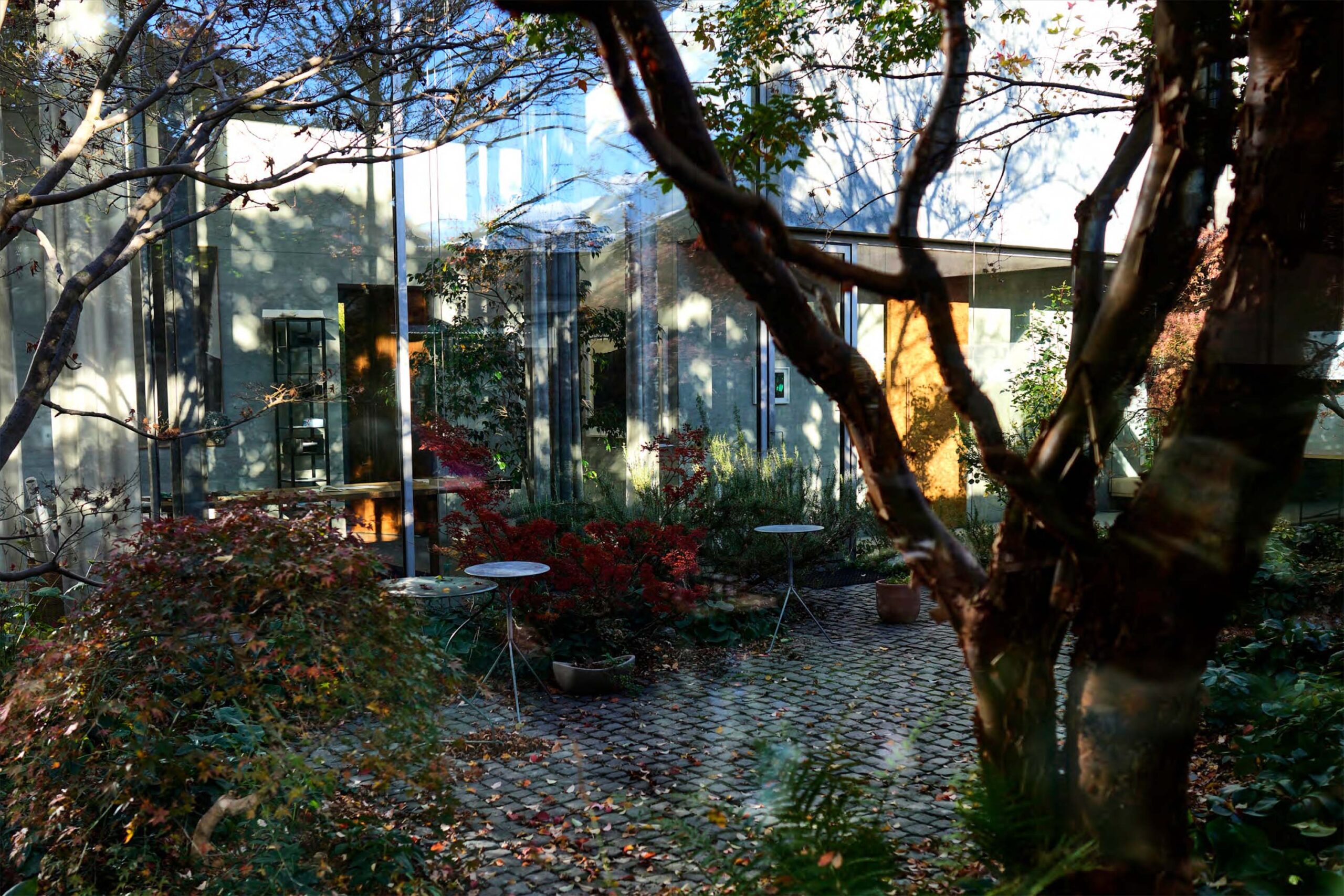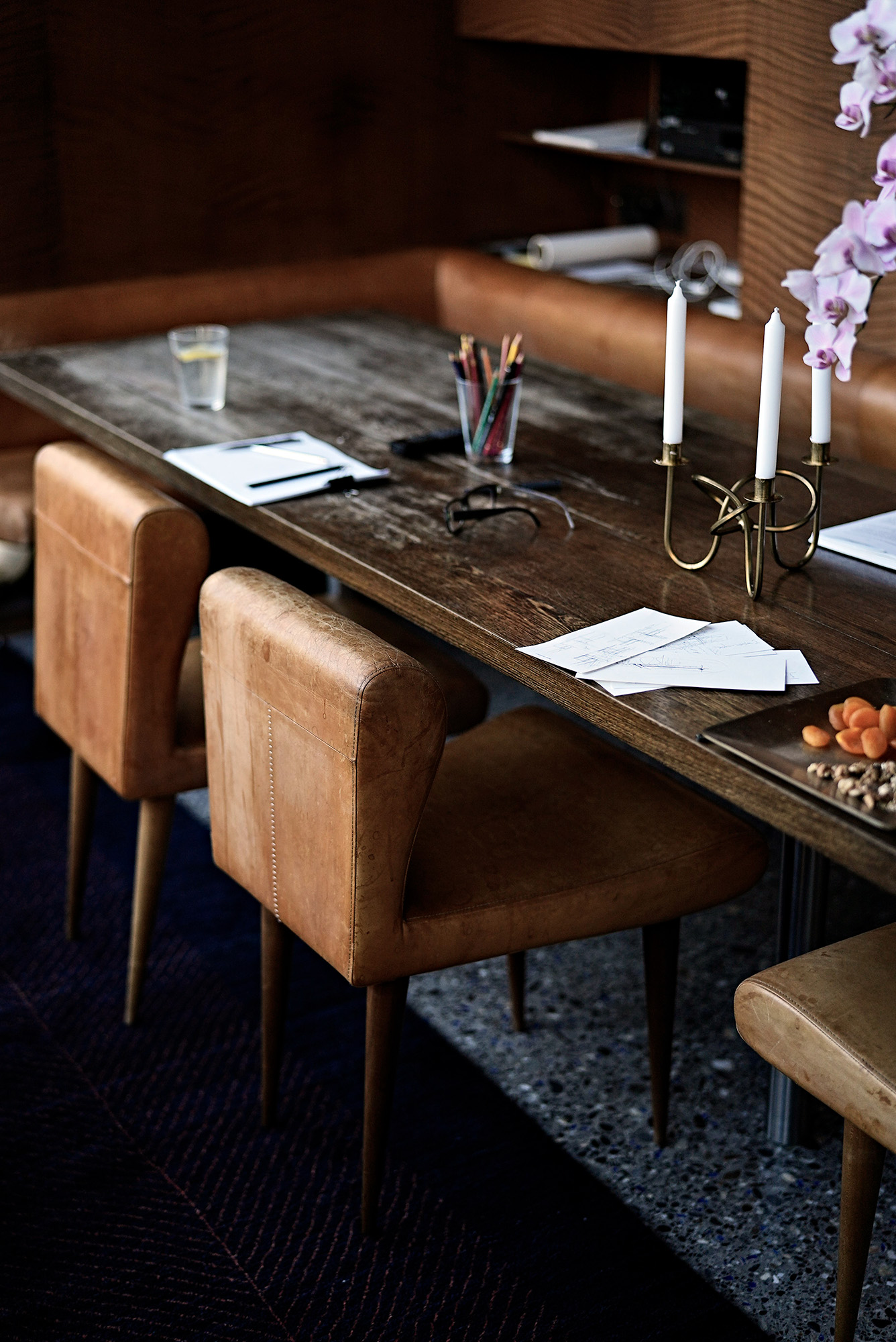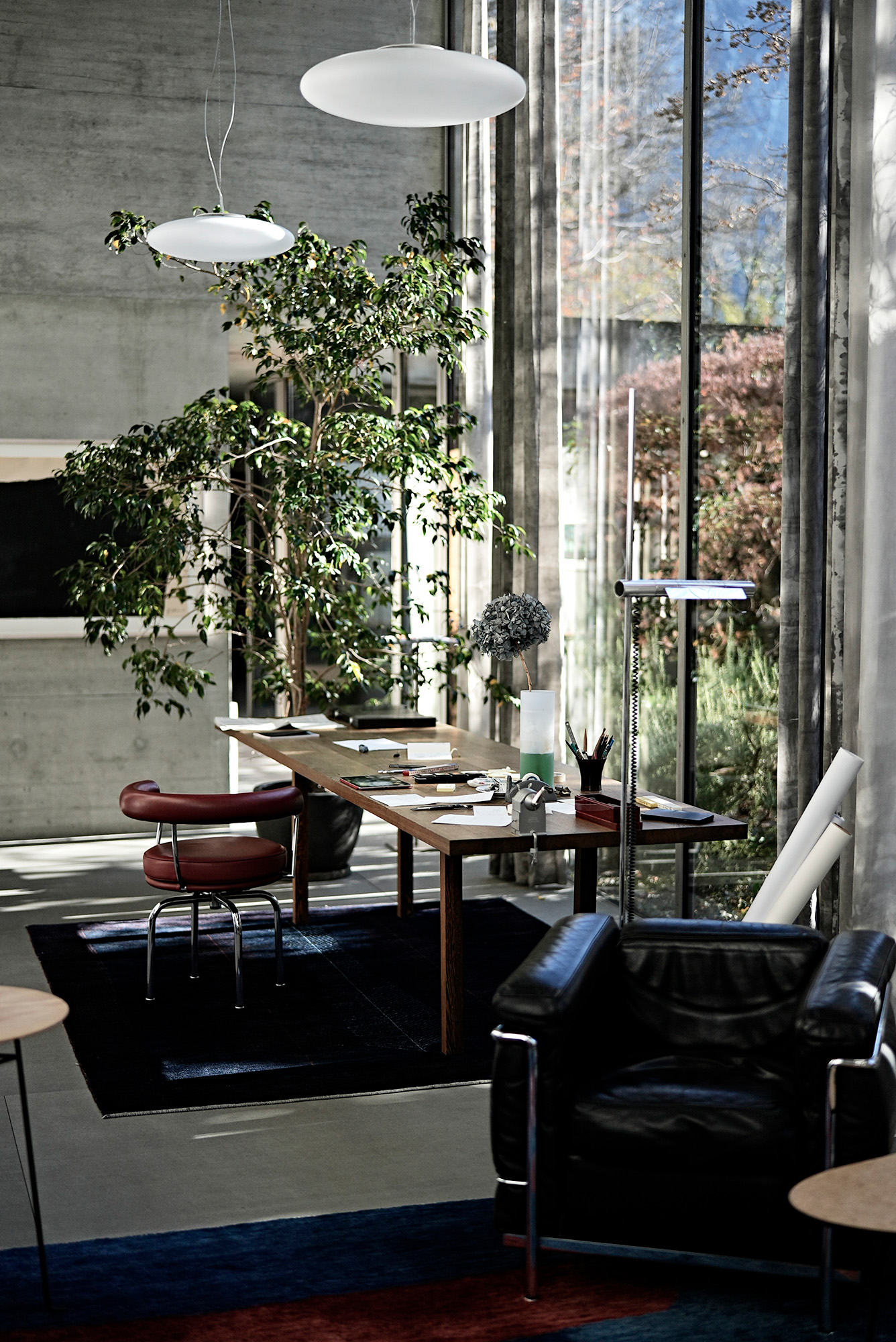
Affinity
Traditional Japanese architecture that has a direct influence from Eastern cultures but has gone through unique development in Japan, has a strong affinity with the architectural works of Peter Zumthor. Since ancient times, the Japanese have long regarded spirits to dwell in water, rocks, and trees, believing in living in harmony with nature. Japan has also been home to rich artisanship and wooden architecture, which were imported from China and Korea 1500 years ago, introduced along with Buddhism. Even in a climate prone to natural disasters, the use of materials such as wood, stone, earth, and iron have sustained architecture for more than a thousand years. The traditional Japanese techniques developed over time with such materials have many connections with Zumthor’s architecture and philosophy, in a way that they both utilize the essential characteristics and presence of the materials to create a permanent atmosphere.
Not a single decorative element is found in the furniture by Peter Zumthor. The functionality is the design, beauty, and its sole existence. The relations between every material and structure, form and detail, are there for a reason. Each material has its unique properties, with both advantages and limitations. How one makes the most of its characteristics depends on how long one has spent studying the material. Only with experience, the coexistence is realized between true functionality, the durability of the material, and universal beauty. In a sense that Zumthor’s furniture creations have the functional beauty of tools born from necessity, we believe they have a lot in common with the universality of traditional Japanese architecture and crafts.
In the production phase of the collection, we rented a gallery in Chur, Switzerland, to examine the prototypes with Peter Zumthor. We asked him to touch the corners of the Atelier Zumthor working table that was made as per the drawings, where he realized were too sharp. Later we sent three different samples of the corners from Japan, responding to his request to chamfer the edges. “This sharp edge is me in my thirties, this edge is me in my forties and fifties…” he described, tracing with his fingers the samples with rounder and softer edges. While touching the roundest edge with his palm, he continued to jokingly yet concisely compare his transition in the furniture design to the shape of the tabletop corners, “This edge is what I am in my sixties.”
私たち日本人は、ピーター・ズントーの建築と、東洋文化を吸収して独自に昇華させてきた日本の伝統建築との間に親和性を抱いています。日本では古くから水や石や木に神が宿ると考え、自然と共生し崇拝する神道を信仰してきました。また、1500年程前に中国や朝鮮から仏教が伝来したころから木造建築や多様な工芸の職人技術が飛躍的に発展し、脈々と受け継がれてきました。自然災害の多い日本の気候風土の中で、古典建築を1000年以上に渡り支えてきた木材と石材、土や鉄などの自然素材、そして時間を掛けて高められてきた伝統技術は、素材の本質的な存在感と特性を生かしながら、普遍的な空気感を創造するズントーの建築と哲学に多くの繋がりを見出すことができます。
彼の家具には装飾的要素が存在しません。家具の機能性が即ちデザインとなり、美となり存在しています。全ての素材と構造、そして形状とディテールの関係は必然性の上に成り立っています。それぞれの素材には独自の性質があり、利点と限界点があります。素材をどのように認識し、特性と利点を生かすことができるかは、長い時間を掛けて素材と向き合い推敲した経験にかかっています。経験なくして、真の機能性、素材の耐久性、そして普遍的な美しさを共存させることはできません。ズントーが創造する家具は、必然から生まれた道具の機能美を備えており、日本の古典建築や伝統工芸が持つ普遍性に共通していると感じます。
スイスのクールにあるギャラリーを借りて、ズントーとコレクションプロダクトのプロトタイプの検証を行ったとき、図面通りに製作したAtelier Zumthor working tableの天板の角を直接触ってもらいました。その際、彼からテーブル天板のエッジが鋭角すぎるのでもう少し丸く面取りしたものを製作してほしいという要望があり、私たちは後日、日本の工場で3種類のエッジのサンプルを製作してスイスに送りました。オリジナルよりも大きく、柔らかに面取りしたそれぞれのサンプルを彼は指で触りながら、「この鋭いエッジは私の30代、このエッジは40、50代…」、そして最も丸く削り取られた優しいエッジを手の平で撫でながら、「このエッジは60代の今の私だな」と、天板のエッジの形状と彼の年齢による家具の在り方の変化を、冗談を交えながら丁寧に教えてくれました。


© Copyright PRESTIGE JAPAN INC. ALL rights reserved.